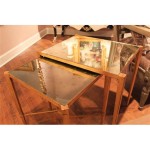How to Mirror iPad to Mac Computer
Mirroring an iPad screen to a Mac computer offers several advantages, from presenting content on a larger display to recording tutorials and demonstrations. This article outlines several methods to achieve this, highlighting the benefits and limitations of each approach.
Using AirPlay with a Compatible Mac
AirPlay is Apple's proprietary technology for wirelessly streaming audio and video content between devices. Certain Mac models support AirPlay receiving, enabling them to act as an external display for an iPad. This method provides a seamless wireless mirroring experience.
To utilize AirPlay mirroring, ensure both the iPad and Mac are connected to the same Wi-Fi network. On the iPad, open Control Center by swiping down from the top-right corner (or swiping up from the bottom on older models). Tap the "Screen Mirroring" icon and select your Mac from the list of available devices. The iPad's screen content will then be mirrored on the Mac's display.
This method offers the convenience of wireless streaming, eliminating the need for cables. It's ideal for presentations, demonstrations, and sharing content with a larger audience. However, the performance can be affected by network congestion, and the feature is limited to compatible Mac models.
Mirroring with QuickTime Player
QuickTime Player, pre-installed on all Macs, provides a wired mirroring solution. This method offers a stable connection and higher performance compared to wireless options, making it suitable for tasks requiring low latency, like recording video tutorials or playing games.
To mirror using QuickTime Player, connect the iPad to the Mac with a USB cable. Open QuickTime Player on the Mac. Go to "File" in the menu bar, then select "New Movie Recording." Next to the record button, a dropdown arrow will appear. Click the arrow and select the iPad as the camera and microphone source. The iPad's screen will then be displayed in the QuickTime Player window.
This method offers a reliable connection and generally better performance than AirPlay mirroring. However, it requires a physical connection, limiting mobility. It also uses the Mac's processing power for encoding the video, which may impact performance for resource-intensive tasks.
Utilizing Third-Party Applications
Several third-party applications offer mirroring functionality with additional features, such as recording options, screen annotations, and device management tools. These applications can provide a more robust solution for specific needs beyond basic mirroring. Research and select a reputable application that meets specific requirements.
Third-party applications often offer features beyond basic mirroring, allowing for greater control and customization. However, some applications may come with a cost, and it's crucial to choose reliable software from trusted sources.
Mirroring Specific Apps with Sidecar (macOS Catalina and later)
Sidecar, introduced in macOS Catalina, allows users to extend or mirror their Mac's display to an iPad. While not technically full iPad mirroring, it allows specific Mac applications to be displayed and interacted with on the iPad screen.
To use Sidecar, ensure both devices are signed in to the same iCloud account and Bluetooth is enabled. On the Mac, click the AirPlay icon in the menu bar and select the iPad from the list of available devices. Choose to either mirror the Mac's display or extend it to the iPad. While in Sidecar mode, compatible applications can be dragged to the iPad screen to utilize it as a secondary display.
Troubleshooting Common Mirroring Issues
Occasionally, mirroring issues may arise. If the connection fails, ensure both devices are on the same Wi-Fi network and that AirPlay or the relevant application is enabled. Restarting both devices can also resolve temporary glitches. For wired connections, check the cable for damage. If issues persist, consult online resources or contact Apple support.
Checking network connectivity, restarting devices, and verifying software compatibility are crucial troubleshooting steps for resolving mirroring issues.
Choosing the Right Mirroring Method
Selecting the appropriate mirroring method depends on the specific requirements. For presentations and casual screen sharing, AirPlay offers a convenient wireless solution. For activities requiring low latency and high performance, a wired connection using QuickTime Player or a dedicated third-party application is preferred. Sidecar serves as a useful tool for extending the Mac's workspace but doesn't provide full iPad mirroring.
Consider factors like network stability, latency requirements, and desired features when choosing a mirroring method.
Optimizing Performance for Mirroring
For optimal performance, ensure both devices are updated to the latest software versions. Close unnecessary applications on both devices to free up resources. For wireless mirroring, minimize other network activity to reduce congestion. For wired connections, use a high-quality USB cable.
Updating software, closing unnecessary applications, and minimizing network activity contribute to a smoother mirroring experience.

How To Share Ipad Screen On Mac Via Usb Or Wifi

How To Mirror Your Ipad On Mac Or Pc

2024 Screen Mirroring Mac To Ipad Most Common Solutions

2024 How To Mirror Ipad Mac Wireless Methods

5 Effective Ways How To Mirror Your Ipad Screen Pc

3 Ways To Share An Ipad Screen On A Mac 2024 Movavi

How To Extend Or Mirror A Mac Screen An Ipad With Sidecar Pcmag

Use Ipad As A Second Display Apple Support Hk

How To Mirror Ipad Mac Full Guide

How To Screen Mirror Ipad Mac With Ipados 15








